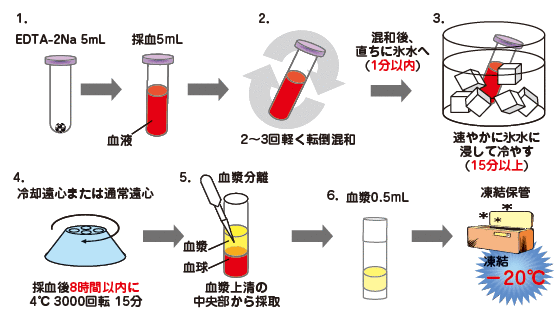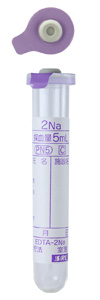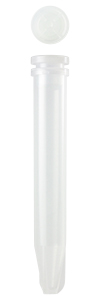アミノインデックス®
アミノインデックス®とは
アミノインデックス®は、血液中の各種アミノ酸濃度のバランスから、現在の健康状態や病気の可能性を明らかにする検査です。アミノインデックス®の解析は、味の素株式会社に委託して解析されています。
AIRS® (AminoIndex® Risk Screening) とは
アミノインデックス®を用いて1回の採血で、血液中のアミノ酸バランスから、現在・将来のさまざまな疾患リスクを一度に評価する検査です。
AICS® (AminoIndex® Cancer Screening) とは
アミノインデックス® を用いて、現在がんである可能性を評価する検査です。
男性AICS5種: 胃がん、肺がん、大腸がん、膵臓がん、前立腺がん
女性AICS6種: 胃がん、肺がん、大腸がん、膵臓がん、乳がん、子宮がん (子宮頸がん、子宮体がん)・卵巣がん
AILS (エーアイエルエス) ® (AminoIndex® LifeStyle diseases) とは
血液中のアミノ酸濃度バランスから、10年以内に脳卒中・心筋梗塞を発症するリスク、
4年以内に糖尿病を発症するリスク、血液中の必須・準必須アミノ酸の低さ、および現在認知機能が低下している可能性を評価し、
検査結果に基づくⅠ~Ⅳ、およびⅠ*~Ⅳ*のタイプを報告します。
また、このタイプをもとに、生活改善評価情報が提供できます。
なお、AILS (エーアイエルエス) ®単独での受託はできません。
AIRS®、AICS®の留意事項
AIRS®は下記年齢の日本人 (妊娠されている方を除く) を対象として開発された検査です。
これらの方以外は評価対象外となります。
| 検査項目 |
評価対象 |
対象年齢 |
| 男性 |
AICS (5種) |
胃がん、肺がん、大腸がん、膵臓がん |
25歳~90歳 |
| 前立腺がん |
40歳~90歳 |
| AILS (脳心疾患リスク) |
10年以内に脳卒中・心筋梗塞を発症するリスク |
30歳~74歳 |
| AILS (糖尿病リスク) |
4年以内に糖尿病を発症するリスク |
20歳~80歳 |
| AILS (アミノ酸レベル) |
血液中の必須・準必須アミノ酸の低さ |
| AILS (認知機能低下) |
現在認知機能が低下している可能性
※AILS (認知機能低下) については49歳以下の方は選択できません |
50歳~100歳※ |
| 女性 |
AICS (6種) |
胃がん、肺がん、大腸がん、膵臓がん、乳がん |
25歳~90歳 |
| 子宮がん・卵巣がん |
20歳~80歳 |
| AILS (脳心疾患リスク) |
10年以内に脳卒中・心筋梗塞を発症するリスク |
30歳~74歳 |
| AILS (糖尿病リスク) |
4年以内に糖尿病を発症するリスク |
20歳~80歳 |
| AILS (アミノ酸レベル) |
血液中の必須・準必須アミノ酸の低さ |
| AILS (認知機能低下) |
現在認知機能が低下している可能性
※AILS (認知機能低下) については49歳以下の方は選択できません |
50歳~100歳※ |
・脳卒中の方、心筋梗塞の方、糖尿病の方、認知症の方、軽度認知障害の方 (いずれも医療機関で診断を受けた方、あるいは治療中の方) の場合、
その疾病・所見に関するAILS値や生活習慣改善タイプは出力されますが、いずれも評価対象外となります。
- 妊娠されている方、授乳中の方、がん患者 (治療中を含む) の方、先天性代謝異常の方、透析患者の方は、
検査結果に影響があるため、検査の実施はご遠慮ください。
なお、AILS (認知機能低下) については49歳以下の方は選択できません。
- 検査前8時間以内に、水以外 (食事、サプリメント等) は摂取せず、午前中に採血してください。
(検査前日の高タンパク質の食事も避けてください)
また、当日朝の運動はお控えください。
- 薬剤による本検査への影響はわかっておりません。
- 他項目との重複依頼は避けてください。
- 強溶血検体や、血漿 (EDTA-2Na) 以外の材料での、受託はできません。
- ご依頼の際は性別・年齢を必ず明記してください。
検体の取り扱いについて
- EDTA-2Na入り採血チューブにて血液約 5mL を採取してください。
- 採血直後、血液を2~3回軽く転倒混和してください。(ローラーでの混和は行わないでください。)
- 混和後直ちに (1分以内) 採血チューブを氷水中 (血液の液面まで氷水につかる状態) で
冷却 (15分以上、遠心操作まで冷却) してください。
- 採血から 8時間以内に冷却条件で遠心分離 (4℃、3000回転、15分) または
通常遠心分離 (3000回転、15分、ローターが昇温していないこと) してください。
- 遠心後、直ちに上清の血漿を血液との界面に触れないように血漿上清の中央部から採取し、
分注してください。
- 分注後、血漿を 4時間以内に凍結保存してください。

AminoIndex®
About AminoIndex®
AminoIndex® is a test that elucidates the current health conditions and
the possibility of having a disease based on the balance of various blood amino acids.
The analysis using AminoIndex® is outsourced to Ajinomoto Co., Inc.
About AIRS® (AminoIndex® Risk Screening)
AIRS® is a test using AminoIndex® that evaluates current and
future risk of having various diseases at once based on the blood amino acid balance
from a single blood collection.
About AICS® (AminoIndex® Cancer Screening)
AICS® is a test using AminoIndex® that evaluates
the current possibility of having cancer.
Male AICS 5 types: Gastric cancer, lung cancer, colorectal cancer, pancreatic cancer, prostate cancer
Female AICS 6 types: Gastric cancer, lung cancer, colorectal cancer, pancreatic cancer,
breast cancer, uterine cancer (cervical cancer, endometrial cancer), ovarian cancer
About AILS® (AminoIndex® LifeStyle diseases)
Based on the blood amino acid balance, AILS® evaluates
the risk of developing stroke or myocardial infarction within 10 years,
risk of developing diabetes within 4 years, low levels of blood essential or semi-essential amino acids,
and the current possibility of cognitive decline, and reports types I-IV,
and types I*-IV* based on the test results.
In addition, evaluation information regarding lifestyle improvement can be provided based on these types.
Please note in advance that AILS®
cannot be accepted alone.
Notes on AIRS® and AICS®
AIRS® is a test developed for Japanese people (excluding pregnant women) of the following ages. Other individuals are not targeted for evaluation.
| Test item |
Target for evaluation |
Target age |
| Male |
AICS (5 types) |
Gastric cancer, lung cancer, colorectal cancer, pancreatic cancer |
25-90 |
| Prostate cancer |
40-90 |
| AILS (Cerebral and cardiac disease risk) |
Risk of developing stroke or myocardial infarction within 10 years |
30-74 |
| AILS (Diabetes risk) |
Risk of developing diabetes within 4 years |
20-80 |
| AILS (Amino acid level) |
Low levels of blood essential or semi-essential amino acids |
| AILS (Cognitive decline) |
Current possibility of cognitive decline
*Those aged 49 or less cannot select AILS (Cognitive decline). |
50-100* |
| Female |
AICS (6 types) |
Gastric cancer, lung cancer, colorectal cancer, pancreatic cancer, breast cancer |
25-90 |
| Uterine cancer, ovarian cancer |
20-80 |
| AILS (Cerebral and cardiac disease risk) |
Risk of developing stroke or myocardial infarction within 10 years |
30-74 |
| AILS (Diabetes risk) |
Risk of developing diabetes within 4 years |
20-80 |
| AILS (Amino acid level) |
Low levels of blood essential or semi-essential amino acids |
| AILS (Cognitive decline) |
Current possibility of cognitive decline
*Those aged 49 or less cannot select AILS (Cognitive decline). |
50-100* |
- In the case of stroke patients, myocardial infarction patients, diabetes patients,
dementia patients, and patients with mild cognitive impairment
(all of whom have been diagnosed or are being treated at medical institutions),
while AILS values and lifestyle improvement types regarding the disease/findings are output,
none of them are targeted for evaluation.
- For pregnant women, lactating women, cancer patients (including those being treated),
patients with congenital metabolic disorders, and dialysis patients,
please refrain from having the test performed as it may affect test results.
Please note in advance that those aged 49 or less cannot select AILS (Cognitive decline).
- Please avoid consuming anything other than water (food, supplements, etc.)
within 8 hours prior to the test, and collect blood by 12:00.
(Avoid high-protein diet as well the day before the test.) In addition,
refrain from exercise on the morning of the test.
- The effect of drugs on this test is unknown.
- Please avoid duplicate requests for other items.
- Specimens with severe hemolysis or materials other than plasma (EDTA-2Na) cannot be accepted.
- Be sure to specify your gender and age when requesting.
About specimen handling
- Collect approximately 5 mL of blood using the blood collection tube containing EDTA-2Na.
- Immediately after collection, mix the blood by inverting it lightly 2 to 3 times. (Avoid using a roller.)
- Immediately (within 1 minute) after mixing, cool the blood collection tube
in ice water at least 15 minutes until centrifugation,
in such a way that the tube is submerged up to the liquid level of the blood.
- Centrifuge under cooled conditions (4℃, 3000 rpm, 15 minutes) or normal conditions
(3000 rpm, 15 minutes, the rotor must not be warmed) within 8 hours of collection.
- Immediately after centrifugation, collect the supernatant plasma from
its center without touching the interface with blood, and then dispense it.
- After dispensing, freeze the plasma within 4 hours.



![]()
![]()


